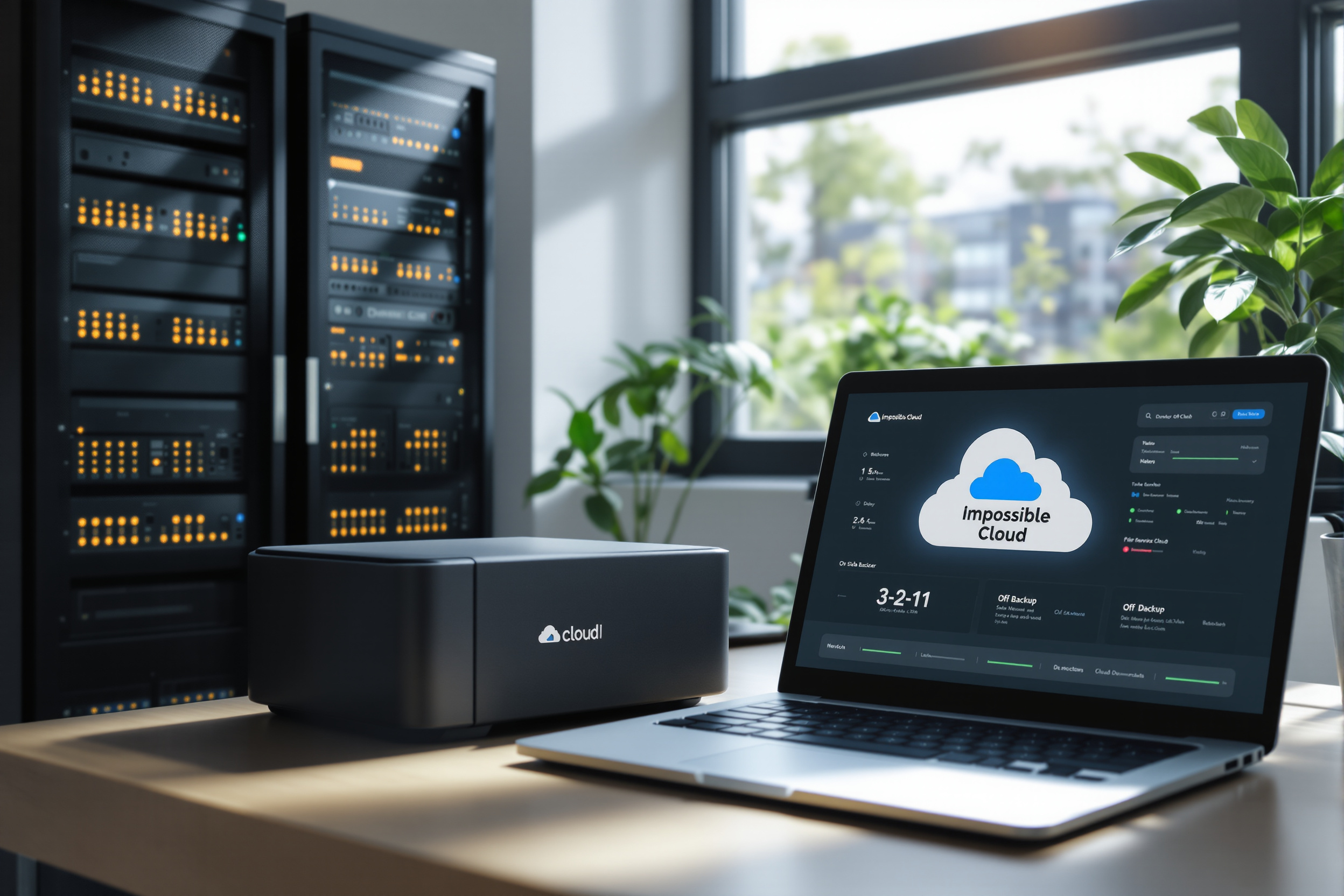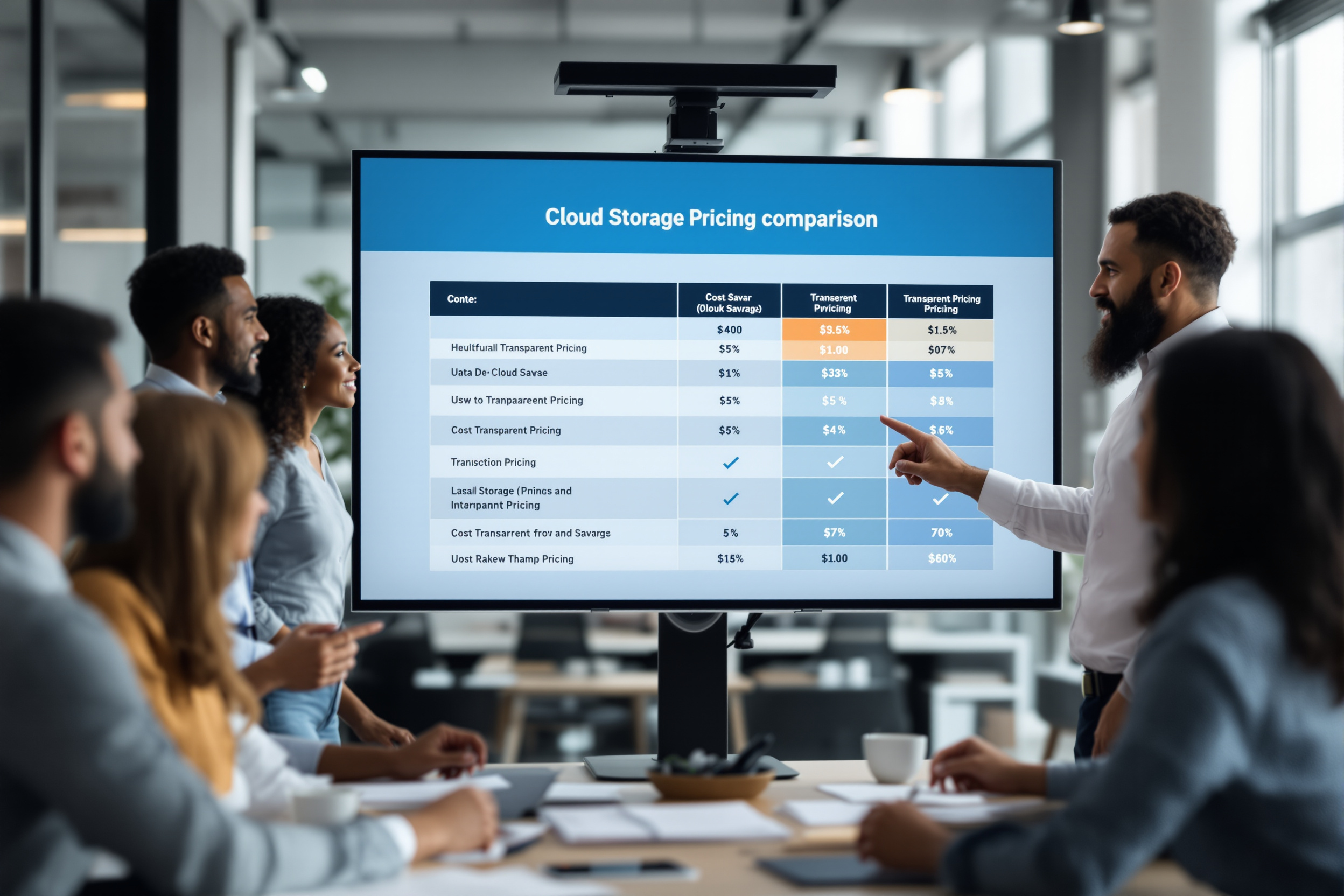Topics on this page
For decades, the 3-2-1 backup rule has been a simple, effective framework for data protection. It dictates keeping three data copies on two different media types, with one copy stored offsite. But with ransomware attacks now targeting backup infrastructure in 96% of cases, this rule is no longer sufficient on its own. IT leaders must now evolve this strategy to include immutable storage, which makes data unchangeable. This modernized approach not only defends against cyber threats but also addresses the #1 cloud pain point: unpredictable costs driven by hidden egress fees and API charges.
Key Takeaways
- The classic 3-2-1 backup rule (3 copies, 2 media, 1 offsite) must be updated with an immutable copy to defend against modern ransomware that targets backups.
- Unpredictable cloud costs, driven by egress fees and API charges, are the #1 pain point for IT leaders, eroding budgets and creating vendor lock-in.
- An S3-compatible storage solution with no egress fees, no API costs, and built-in immutability can reduce cloud storage expenses by 60-80% while neutralizing ransomware threats.
Deconstructing the Classic 3-2-1 Backup Rule
The 3-2-1 backup rule provides a straightforward framework to minimize the risk of a single point of failure. It ensures data is recoverable after nearly any failure scenario, from hardware crashes to natural disasters. The strategy is built on three core principles:
- Three Copies of Data: This includes the original production data and at least two additional backups, ensuring redundancy protects you if one copy fails.
- Two Different Media Types: Storing backups on two distinct forms of media, like an internal disk and cloud object storage, prevents failure of a single media type from destroying all copies.
- One Offsite Copy: Keeping at least one backup copy in a separate physical location protects against site-wide events like fires or floods, ensuring effective disaster recovery.
This approach has served businesses well for over 20 years, but the rise of cybercrime requires a more robust implementation.
Evolving the Rule to Counter Modern Ransomware Threats
Ransomware attacks have fundamentally changed the data protection landscape, with 89% of incidents now involving data exfiltration. Attackers no longer just encrypt production data; they actively hunt for and delete backups to prevent recovery. This threat makes a modern update to the 3-2-1 backup rule essential for survival.
The updated best practice is often called the 3-2-1-1-0 rule. It adds two critical layers:
- One Immutable or Air-Gapped Copy: At least one backup copy must be immutable-meaning it cannot be altered or deleted for a defined period. This is the ultimate defense against ransomware.
- Zero Errors: This principle mandates regular, automated verification of backups to ensure they are 100% recoverable when needed.
By incorporating an immutable copy, you create a version of your data that even attackers with admin credentials cannot compromise. This evolution turns a simple backup plan into a powerful cyber resilience strategy.
Avoiding the #1 Cloud Pain Point: Unpredictable Costs
For the offsite copy in a 3-2-1 backup rule, many organizations turn to the cloud. However, 95% of IT leaders report being hit with unexpected cloud storage charges. These hidden fees, primarily for data egress (retrieval) and API calls, create massive budget unpredictability and vendor lock-in.
Egress fees are so prohibitive that 55% of companies feel trapped with their current provider, unable to afford to move their own data. These charges can make the total cost of ownership 60-80% higher than anticipated. This economic lock-in creates a strategic risk, preventing businesses from adopting better technology or optimizing costs. A predictable pricing model is essential for a sustainable cloud backup strategy.
Achieving Cost Predictability with an S3-Compatible Alternative
A cost-efficient S3-compatible alternative eliminates the financial penalties that hold businesses back. Impossible Cloud is predictable by design, offering transparent pricing that eliminates 60-80% of typical cloud storage costs. This is achieved through a simple promise: no egress fees, no API call costs, and no minimum storage durations.
Our "Always-Hot" architecture ensures all data is immediately accessible with no restore delays or retrieval fees, which simplifies operations for a 20% faster backup performance. Full S3 API compatibility means you can switch to a predictable cost model without rewriting a single line of code. Just change the endpoint and your existing backup tools, like our partner Veeam, keep working seamlessly.
Implementing Immutable Backups to Neutralize Ransomware
The most critical evolution of the 3-2-1 backup rule is the addition of an immutable copy. Impossible Cloud provides this capability through Immutable Storage with S3 Object Lock. This feature allows you to make backup data unchangeable and undeletable for a policy-defined period, creating a secure copy that ransomware cannot touch.
Implementing immutable backups provides several key benefits:
- Guaranteed Ransomware Recovery: Since backups cannot be encrypted or deleted, you always have a clean copy for restoration, making ransom payments unnecessary.
- Enhanced Data Integrity: Immutability protects against accidental deletion and malicious insider threats, ensuring your backup archive is always trustworthy.
- Simplified Compliance: For regulated industries, Object Lock helps meet strict data retention requirements for standards like SOC 2 and ISO 27001.
This single feature transforms your backup repository from a target into a fortress. It is a non-negotiable layer of defense for any modern business.
A Practical Checklist for Your Modernized Backup Strategy
Transitioning to a modern 3-2-1 backup rule is straightforward with the right tools. A drop-in S3 replacement simplifies migration and protects your existing investments in backup software and scripts. Here is a step-by-step checklist to guide your implementation:
- Identify Critical Data: Determine which datasets are essential for business operations and require the highest level of protection.
- Automate Primary and Secondary Backups: Configure your backup software to create the first two copies on different local media, such as server disks and a NAS device.
- Configure Offsite Immutable Copies: Point your backup software to an S3-compatible object storage endpoint. Enable Object Lock on the storage bucket to make every backup copy immutable for its required retention period.
- Test Your Recovery Plan: Regularly perform test restores to verify data integrity and ensure your team can meet your Recovery Time Objectives (RTOs). This validates the '0' in the 3-2-1-1-0 rule.
This disciplined approach ensures your backup strategy is resilient, cost-effective, and ready for any threat.
For MSPs: Building Profitable BaaS with Predictable Margins
For Managed Service Providers (MSPs), cost unpredictability is a direct threat to profitability. Quoting Backup-as-a-Service (BaaS) offerings is nearly impossible when egress fees can erase margins after a single large restore operation. A predictable-cost storage model is a competitive advantage.
Impossible Cloud is partner-ready, offering a multi-tenant management console and full automation via API/CLI. With zero egress fees and no API charges, MSPs can build profitable, competitive BaaS and DRaaS offerings. This model allows you to quote with confidence, knowing your margins are protected. Fast onboarding and seamless integration with tools like NovaBackup mean you can deliver value to your clients in hours, not weeks.
Start Building a Resilient and Cost-Effective Backup Strategy Today
Modernizing your 3-2-1 backup rule is the single most effective step you can take to protect your organization from data loss, ransomware, and unpredictable cloud costs. By choosing an S3-compatible storage alternative with no egress fees and built-in immutability, you gain data control and an exit strategy by design. This approach delivers enterprise-grade resilience without the enterprise price tag.
Ready to see how much you can save? Talk to an expert to calculate your savings and start building a better backup strategy that is fast, affordable, and compatible.
More Links
British-German Jurists' Association (BISI) provides a report detailing cybersecurity in Germany.
FAQ
Is the 3-2-1 backup rule still relevant today?
Yes, the core principles of the 3-2-1 rule are still highly relevant as a foundation for data protection. However, it is no longer sufficient on its own and must be updated with at least one immutable copy to be effective against modern ransomware threats.
How does S3 compatibility help my backup strategy?
S3 compatibility ensures your existing backup software, scripts, and applications can connect to a new storage provider without any code changes. This allows you to switch to a more cost-effective solution like Impossible Cloud by simply changing the endpoint, minimizing migration risk and effort.
Can I really save 60-80% on cloud storage?
Yes. Traditional cloud providers often charge significant fees for data egress (retrieval), API requests, and minimum storage durations. By choosing a provider that eliminates these charges, organizations can reduce their total cloud storage costs by 60-80%, especially for backup and archive workloads.
What is S3 Object Lock?
S3 Object Lock is a feature of S3-compatible object storage that allows you to apply retention policies to data, making it immutable. This prevents objects from being deleted or overwritten for a fixed amount of time or indefinitely, which is a critical defense against ransomware.
What does 'no vendor lock-in' mean?
No vendor lock-in means you have the freedom to move your data to another provider at any time without facing prohibitive costs or technical barriers. This is achieved through open standards like the S3 API and a pricing model with no egress fees for data retrieval.
Is this solution suitable for regulated industries?
Yes. Impossible Cloud provides enterprise-grade compliance certifications, including SOC 2 and ISO 27001, making it suitable for organizations in regulated industries like financial services and healthcare that need to ensure data control and integrity.



.png)
.png)
.png)
.png)



.png)




%201.png)